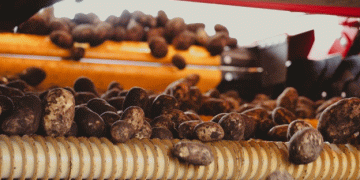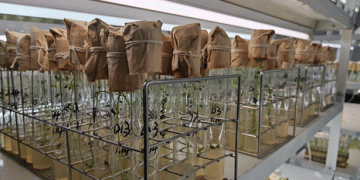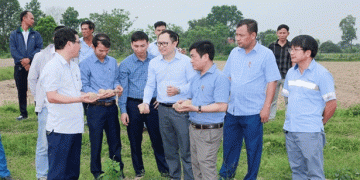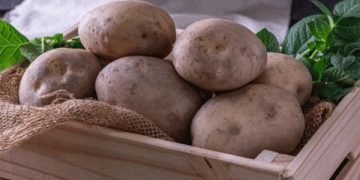#HybridPotatoBreeding #EvolutionaryGenomics #DeleteriousMutations #PotatoVarieties #AgriculturalResearch
#Description: Chinese scientists have achieved a significant breakthrough in hybrid potato breeding by utilizing evolutionary genomics to identify deleterious mutations. This breakthrough has the potential to shorten the breeding process and generate a greater number of improved potato varieties. The research team from the Agricultural Genomics Institute at Shenzhen, under the Chinese Academy of Agricultural Sciences, published their findings in the scientific journal Cell. By transforming potato reproduction from asexual to sexual and shifting reliance from tubers to seeds, scientists aim to guide potato breeding using genomics and synthetic biology.
#Development: Potato, being an essential tuber food crop worldwide, including China, boasts several advantages such as lower water requirements and adaptability to diverse regions. However, the process of breeding new potato varieties is time-consuming, with some varieties dating back over a century. The complexity lies in the fact that potatoes are tetraploid, possessing four sets of genomes, and rely on asexual propagation through tubers. This results in long breeding cycles, low reproduction efficiency, susceptibility to diseases, and vulnerability to pests.
To address these challenges, the research team embarked on the “Ubiquitous Potato Project.” Their objective was to shift potato reproduction from asexual to sexual and transition from tuber reliance to seed reliance. The researchers aimed to guide potato breeding by utilizing genomics and synthetic biology.

In order to obtain consistent high-quality potato varieties, scientists need to acquire highly homozygous inbred lines through continuous self-fertilization. This allows for the production of hybrid commercial lines with consistent properties. However, due to the extensive history of asexual reproduction in potatoes, numerous hidden deleterious mutations have accumulated. These previously “invisible” mutations reveal their adverse effects on plants during self-fertilization, resulting in reduced viability, sterility, lower disease resistance, and decreased yield. Overcoming these deleterious mutations represents a major challenge in hybrid potato breeding.
The research team addressed this obstacle by collecting and comparing genomic information from 100 Solanaceae and Convolvulaceae materials with an accumulated evolution history of 1.2 billion years. Potato belongs to the Solanaceae family, while sweet potato belongs to the Convolvulaceae family. By examining the conserved and unchanging sites in the genomes, the researchers identified gene sites that, if mutated, were more likely to have adverse effects on potatoes, known as deleterious mutations. They created the first two-dimensional map of potato deleterious mutations, enabling a more comprehensive and efficient search for their elimination.
Additionally, the research team developed a new whole-genome prediction model that incorporated deleterious mutation information. This model significantly improved the accuracy of predicting traits such as yield, plant height, and tuber shape by 25 to 45 percent. By assisting breeders in making early breeding decisions, this model reduces breeding costs and shortens the breeding process of potatoes.
#Consequences: This breakthrough in hybrid potato breeding has the potential to increase breeding efficiency by approximately 50 percent, providing a foundation for variety improvement. The technology developed by the Chinese scientists could also be applicable to improving other crops, including sweet potatoes, fruits, sugarcane, and various tropical crops. By leveraging evolutionary genomics and addressing deleterious mutations, researchers are advancing agricultural practices and paving the way for the development of more resilient and productive crop varieties.
![Staff members sort out potatoes at a potato cultivation center in Xiji county, Northwest China's Ningxia Hui autonomous region, March 2, 2023. [Photo/Xinhua]](https://potatoes.news/wp-content/uploads/2023/05/6454cd7ca310b60580cc63fd-750x375.jpeg)




